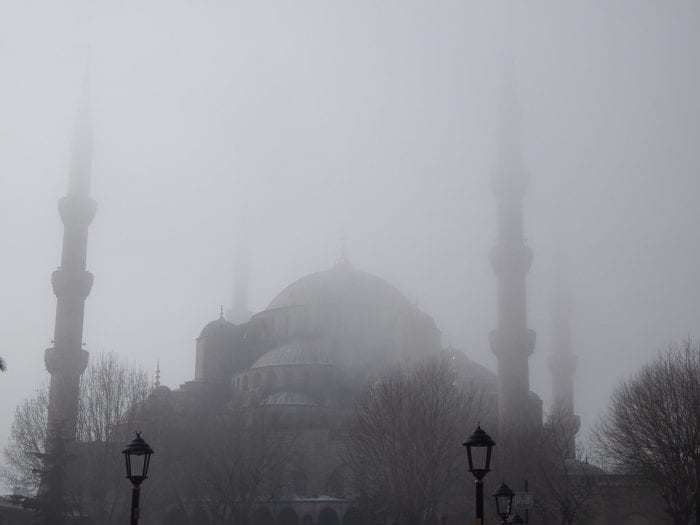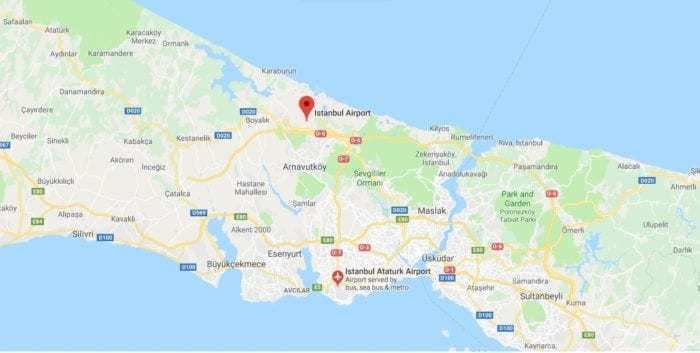Istanbul’s new ‘megahub’ airport has had to divert numerous flights due to bad weather. Last week, several flights were sent to Çorlu, 60 miles to the west of the new airport, as fog engulfed the facility. Experts say that they warned about this issue, and that it will only continue to re-occur as the site was wholly unsuitable for aviation.
The highly anticipated airport at Istanbul, slated to evolve into the largest in the world, has been a long time coming. But, just last month, the airport finally fully opened for the first time.
Although Turkish Airlines began flying from the airport back in November, operations weren’t fully moved to the new site until April this year. When they were moved, it was an operation and a half, with everything, and we mean everything, being swapped to the new airport in just 45 hours.
But, just weeks after opening, the airport had to divert a number of flights away from the ‘megahub’ and to a neighboring airport. Flights from Basel, Berlin, Bremen, Göteborg, Edremit, Elazığ, Marseille and Riga were forced to land at Çorlu located around 60 miles away from Istanbul. This was due to heavy fog in the area, making landing impossible.
According to Live And Lets Fly, a reporter in Turkey, Per Ahval, said,
“This came as little surprise to the aviation experts who have been warning since the project was conceived that the location chosen for the new airport lacked cover from the northerly winds blowing in from the Black Sea and would also make it susceptible to disruptions caused by cloud and fog.”
The Turkish fog
Believe it or not, fog is nothing unusual for Turkey, and particularly that part of Istanbul.
In fact, just a couple of months before the airport was opened, towards the end of February, heavy fog hit the city, lasting for over three days. According to the Daily Sabah, visibility was reduced to 10 meters or less in places causing ferries and flights to be cancelled as well as many problems on the road.
Again, at the end of January, heavy fog covered Turkey including Istanbul. And then again in October of 2018. In fact, a quick Google search will reveal many more incidents of heavy fog causing problems for Istanbul.
Most typically, the fog is caused by cold air rolling in from Russia in the north, crossing the Black Sea with nothing to warm it up. As it hits the warm Mediterranean air of Turkey, it condenses into a thick fog, often making the Bosporus Strait impassable by ships.
However, the old airport, Ataturk, was on the southern coast of Turkey. This meant the fog would have to cross the whole of Istanbul and the Turkish peninsula to reach it. While this did happen from time to time, mostly the airport was protected by the city.
The new Istanbul Airport, on the other hand, has been built on the Black Sea side of the city. This means there is absolutely nothing to shelter it from those thick, dangerous fogs that often roll in from the north. Experts also warn of strong northerly winds in this area, from which the airport has no protection.
A design flaw?
The massive and hotly anticipated third airport of Istanbul has been mired in controversy since the project started. From economic worries to environmental concerns, not to mention delay after delay, it’s raised eyebrows and stress levels at every stage. However, this latest development could be the biggest hitch for the airport yet.
Reports from the Istanbul Chamber of Engineers and Architects (TMMOB) state that the site of the airport experiences storms for almost a third of the year; 107 days out of 365 on average. The location of the airport also suffers intense cloud over for an average of 65 days per year, not to mention extreme winds from the Black Sea due to its lack of protection.
Speaking to Ahval, TMMOB member and meteorologist Orhan Şen said,
“The airport’s already been built, despite all the warnings, and since there’s no chance of moving the airport we now need to focus on solutions. We said from a meteorological perspective this wasn’t a good site, but they built it anyway”
Why authorities and engineers would press on and build an airport in a location which has been deemed unsuitable beggars belief. Chances are, there just weren’t any other sites on that narrow peninsula within striking distance of the city, so they took the advice but decided to go for it regardless.
The end result? A hugely expensive airport which could, if they aren’t lucky, end up also being a huge headache for both passengers and airlines. Ironically, little old Ataturk airport could end up being a feasible plan B for those days when Istanbul’s megahub just can’t cope.




